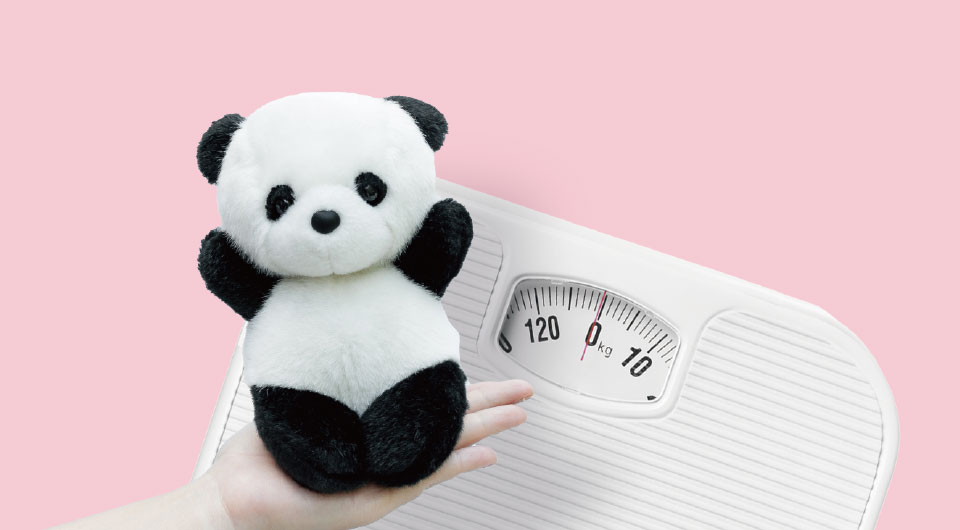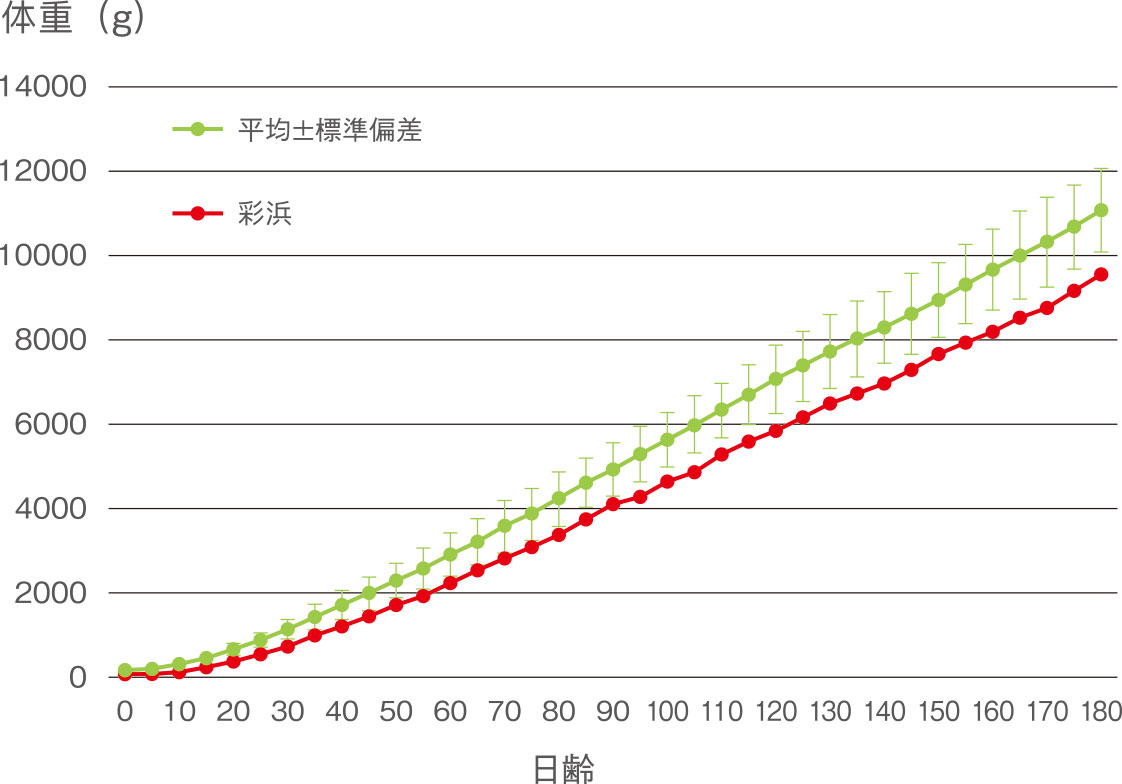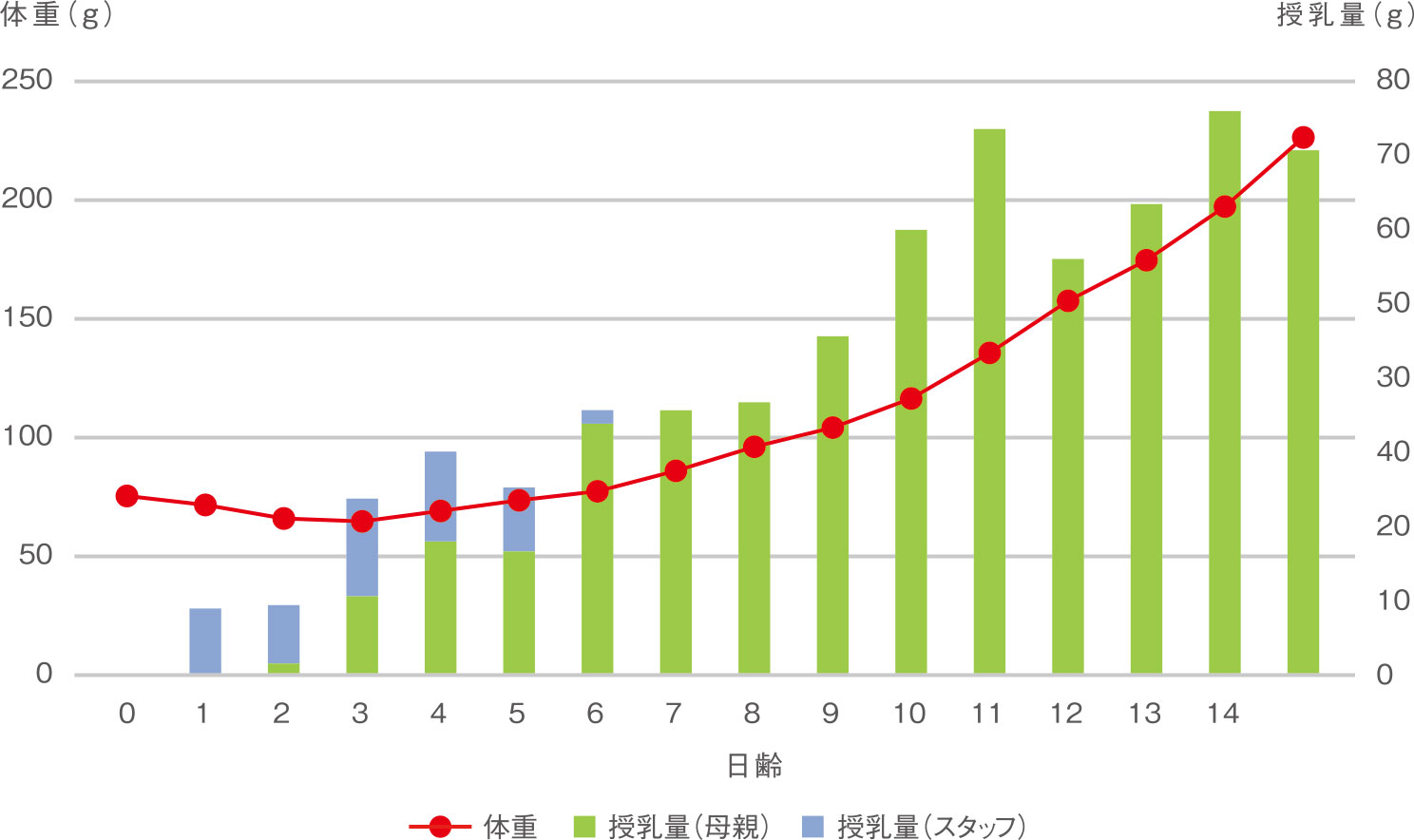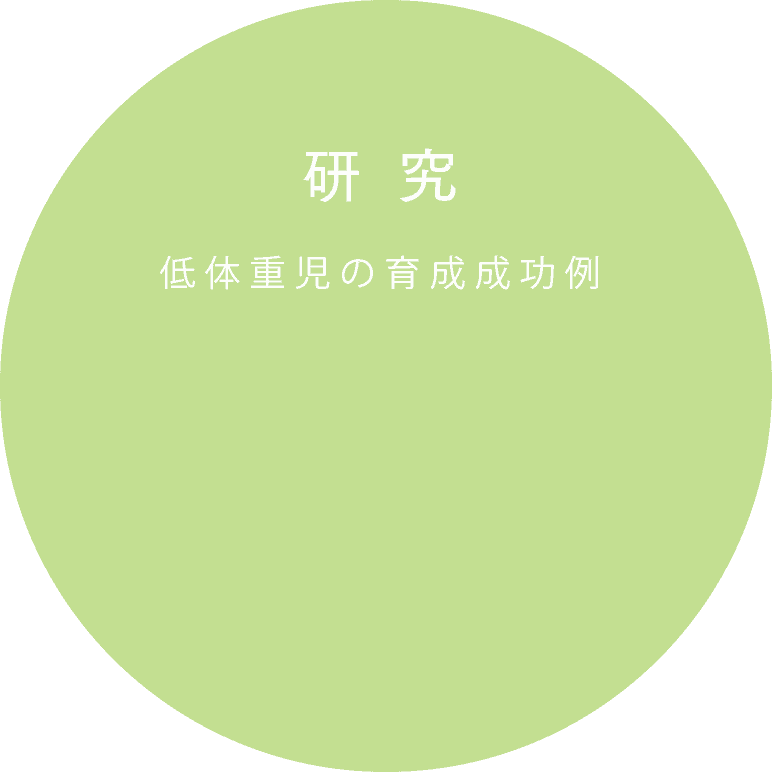

In August 2018,
Babies born in the Park between 2000 and 2020 weighed an average of 156.8 g. As for low birth weights, there was a rare case of a baby weighing 51 g in 2006 and 42.8 g in 2019 at the Chengdu Giant Panda Breeding and Research Base, but in general, birth weights of 100 g The mortality rate for babies weighing less than 100g is considered high. In our park, a baby was born in August 2018 with low weight and low body temperature, weighing 75g and having a temperature of 31.5°C. Both daytime and nighttime staff worked together to manage the baby (name: "Saihama") and its mother "Rahama" and were able to successfully raise the baby.
List of birth weights at Adventure World
| individual name | Birth weight | 母親 | |
|---|---|---|---|
| 2000年 | good beach | 195g | up and down |
| 2001年 | lustrous beach | 190g | |
| 2003年 | beautiful lustrous colour similar to that of the kingfisher's feathers | 160g | |
| sweetfish (Plecoglossus altivelis altivelis altivelis) | 106g | ||
| 2005年 | lucky break | 180g | |
| 2006年 | I love the beach | 196g | |
| beautiful lustrous colour similar to that of the kingfisher's feathers | 84g | ||
| 2008年 | naturally flooded salt farm below the high-tide mark | 194g | good beach |
| Eihama | 116g | ||
| 2010年 | seaside | 158g | |
| sunny beach | 123g | ||
| 2012年 | beautiful lustrous colour similar to that of the kingfisher's feathers | 167g | |
| 2014年 | 桜浜 | 181g | |
| 桃浜 | 186g | ||
| 2016年 | Codium fragile (species of seaweed) | 197g | |
| 2018年 | coloured sandy beach | 75g | |
| 2020年 | maple beach | 157g |
|
| Mean ± standard deviation | 156.8±40.8g |
Saihama's weight transition
-

*Average: weight of children born in 2000~2020 (n=17)
-
Saahama's body temperature was low at 31.5°C immediately after birth, and she was unable to drink breast milk on her own and was in a weakened state. About 9 hours after her birth, we took her from her mother and kept her warm in an incubator because we could no longer hear her cries. Her body temperature was 33.4°C and her respiration and heartbeat were weak, so we supplied oxygen and inotropic injections into the incubator. Respiration and heartbeat stabilized after about an hour of treatment, and the body temperature recovered to 36°C three hours later. During the initial nurturing, we paid attention to three points: ensuring the baby's feeding volume, maintaining body temperature, and maintaining the mother's stable mental state.
1. Ensure the quantity of breastfeeding
In order to secure the amount of milk and to stabilize her body temperature, the milk was returned to "Ryohama" only when she was nursing and kept warm in the incubator for the rest of the time. Since "Saihama" did not have the strength to suckle immediately after birth, the staff gave her breast milk that they had milked using a syringe. The staff guided Saahama's mouth to Rahama's nipple to encourage her to breastfeed on her own, and confirmed her first self-feeding at 2 days old. The baby was a little older than average at 6 days, but gained steadily.
Weight and lactation volume

2. Maintenance of body temperature
Approximately 7 hours after birth, the mothers cohabited with "Rahama" for 1 hour, and their body temperatures dropped by 2.1°C. Subsequent cohabitation was kept as short as possible, and the body temperature was kept warm in the incubator except during breastfeeding. However, we found that the length of cohabitation was not necessarily proportional to the rate of temperature drop, but was affected by the way the mother held the baby during cohabitation. The initial incubator temperature setting was 37.5°C. It was lowered gradually according to the baby's body temperature and respiratory rate. Each time the baby lived with its mother, we observed a drop in body temperature, but from around 11 days of age, the drop became smaller and smaller, and after the baby weighed over 300 g at 18 days of age, it was able to maintain a temperature in the 35°C range if it lived with its mother for about one hour. Thereafter, no major problems were observed, and the baby continued to grow steadily like other babies.
3. Maintenance of the mother's mental stability
It was also important to stabilize the mental state of the mother, Yoshihama, who had given birth six times between 2008 and 2018, and who was very attached to her baby. However, when we took the baby away from her, she became restless and began to search for her. In order to calm her down, when she was not holding the baby, we moved her from the maternity room to another room, darkened the room, and managed the room so that no noise would be made. There were concerns that leaving Saihama for long periods of time might lead to abandonment of the baby or a decrease in milk production, but RYOHAMA raised the baby well.
